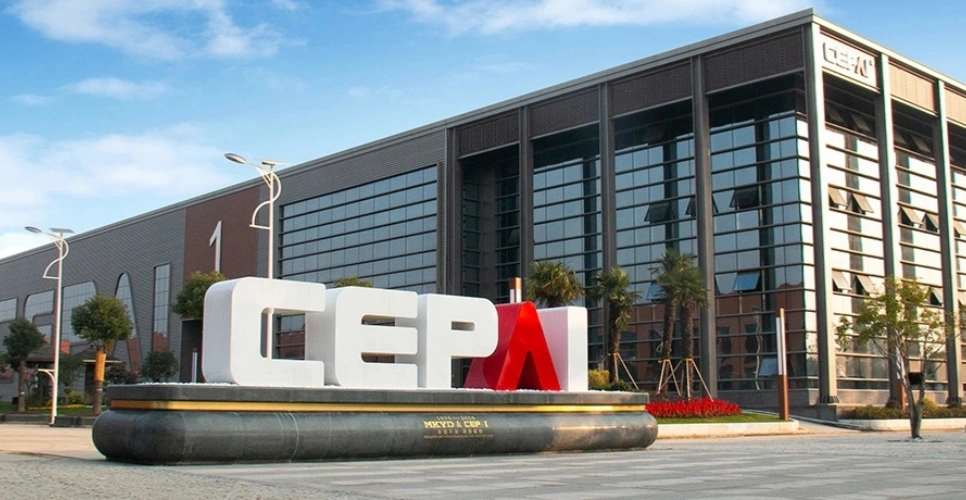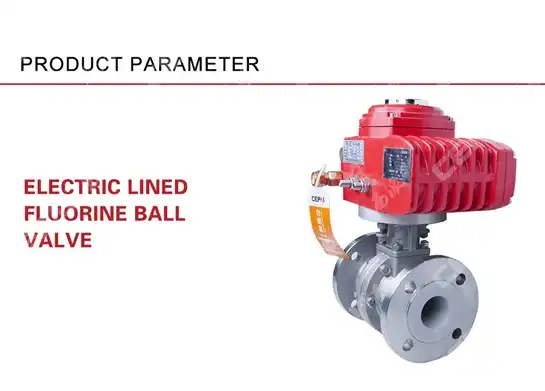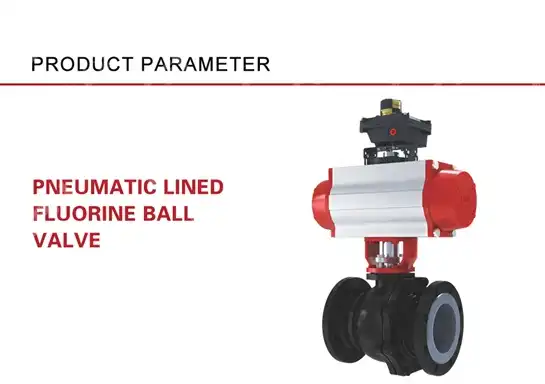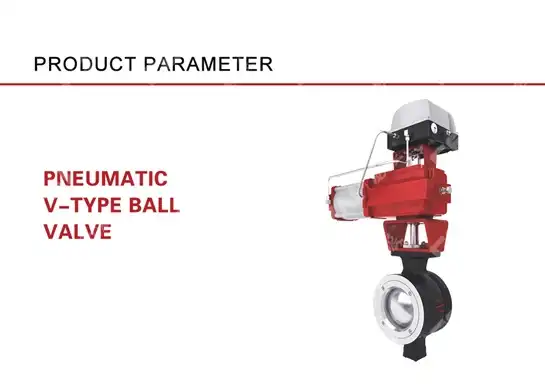What Makes a Pneumatic Ball Valve Reliable for Long-Term Use?
When production lines suddenly halt due to valve failures, the cost extends far beyond repair expenses. Unplanned downtime, compromised product quality, and safety risks create cascading problems throughout industrial operations. A Pneumatic Ball Valve designed for long-term reliability becomes your first line of defense against these operational nightmares. Understanding the critical factors that ensure sustained performance helps you make informed decisions that protect your investment, minimize maintenance costs, and guarantee consistent operational efficiency across demanding industrial environments where failure is simply not an option.

Material Selection and Construction Quality in Pneumatic Ball Valve Design
The foundation of any reliable Pneumatic Ball Valve begins with superior material selection and precision manufacturing. High-grade stainless steel alloys, including CF8, CF8M, and CF3M, provide exceptional corrosion resistance that withstands aggressive chemical environments, extreme temperatures, and abrasive media. These materials undergo rigorous metallurgical testing to verify their composition meets exacting standards before entering the production process. Advanced casting and forging techniques eliminate internal defects, porosity, and structural weaknesses that could compromise valve integrity over extended service periods.
-
Advanced Metallurgy for Extended Service Life
Modern Pneumatic Ball Valve construction employs duplex and super duplex stainless steels in applications demanding superior strength-to-weight ratios and enhanced resistance to stress corrosion cracking. The molecular structure of these advanced alloys provides remarkable durability in chloride-rich environments, high-pressure systems, and applications involving cyclic temperature variations. Manufacturers implementing strict quality control protocols conduct spectroscopic analysis, hardness testing, and tensile strength verification on every batch of raw materials. This comprehensive approach ensures consistency across production runs and guarantees that each Pneumatic Ball Valve meets or exceeds published specifications for mechanical properties and chemical composition.
-
Precision Manufacturing Standards
State-of-the-art CNC machining centers create valve components with tolerances measured in microns, ensuring perfect alignment between the ball, seats, and body. This precision directly impacts sealing performance, operational smoothness, and long-term reliability. High-precision manufacturing eliminates the microscopic imperfections that accelerate wear patterns and lead to premature seal degradation. Investment in intelligent manufacturing systems, including robotic automation and real-time quality monitoring, produces Pneumatic Ball Valve components with consistent dimensional accuracy that traditional manufacturing methods cannot achieve. These advanced production techniques reduce human error, improve repeatability, and create valves that maintain their performance characteristics throughout their entire service life.
Sealing Technology and Leak Prevention Mechanisms
Effective sealing technology represents the cornerstone of Pneumatic Ball Valve reliability, directly determining operational efficiency and environmental safety. Premium-grade PTFE (polytetrafluoroethylene) seals offer exceptional chemical resistance, low friction coefficients, and self-lubricating properties that minimize wear between moving components. The molecular structure of PTFE creates a virtually non-stick surface that prevents media buildup and maintains consistent sealing force across millions of operating cycles. Advanced seal designs incorporate spring-loaded mechanisms that compensate for wear over time, automatically adjusting to maintain leak-tight shutoff even as components experience normal operational degradation.
-
Multi-Layer Seal Design
Contemporary Pneumatic Ball Valve designs employ multi-layer sealing configurations that provide redundant leak prevention and enhanced reliability. Primary seals establish initial contact with the ball surface, while secondary backup seals activate under extreme pressure differentials or unusual operating conditions. This layered approach ensures that even if the primary seal experiences unexpected degradation, the valve maintains its integrity and prevents costly process disruptions. Elastomeric seal materials, including Viton, EPDM, and specialty compounds, offer temperature resistance ranging from cryogenic conditions to elevated process temperatures exceeding standard operational parameters. Material selection depends on specific application requirements, considering factors such as chemical compatibility, temperature extremes, and pressure fluctuations.
-
Dynamic Seal Adjustment Systems
Innovative Pneumatic Ball Valve designs incorporate dynamic seal adjustment mechanisms that maintain optimal contact pressure between seating surfaces throughout the valve's operational life. These systems utilize mechanical springs, hydraulic pressure, or pneumatic force to continuously apply appropriate sealing force, compensating for thermal expansion, material compression, and normal wear patterns. The result is a valve that delivers consistent leak-tight performance from initial installation through decades of service, eliminating the gradual performance degradation typical of conventional valve designs. This technology particularly benefits applications involving frequent cycling, where traditional static seals would quickly lose their effectiveness due to repeated compression and expansion cycles.

Actuator Design and Pneumatic Control Systems
The actuator serves as the driving force behind every Pneumatic Ball Valve, converting compressed air energy into precise mechanical motion that positions the ball element. Rack-and-pinion actuators provide reliable quarter-turn operation with excellent torque output across the entire rotation range. High-quality actuators incorporate precision-machined gear systems that eliminate backlash, ensure accurate positioning, and deliver smooth, consistent operation even after millions of cycles. Anodized aluminum construction reduces weight while maintaining structural integrity, and sealed bearing systems protect internal components from environmental contamination that could compromise performance or accelerate wear.
-
Intelligent Actuation Technology
Advanced Pneumatic Ball Valve systems integrate intelligent actuation technology featuring position feedback sensors, diagnostic capabilities, and predictive maintenance indicators. These smart actuators continuously monitor operating parameters including cycle counts, supply pressure variations, temperature fluctuations, and performance anomalies. Real-time data collection enables maintenance teams to identify developing issues before they cause unexpected failures, transitioning from reactive repair strategies to proactive maintenance programs that maximize uptime and extend equipment life. Position transmitters provide precise valve status information to control systems, enabling automated process control and immediate response to changing operational requirements. This integration creates a comprehensive valve management system that enhances reliability while reducing total cost of ownership.
-
Fail-Safe Mechanisms
Reliability-focused Pneumatic Ball Valve designs incorporate fail-safe mechanisms that protect processes during power failures, air supply interruptions, or control system malfunctions. Spring-return actuators automatically drive valves to predetermined safe positions when pneumatic pressure drops below operational thresholds. This feature proves critical in applications where uncontrolled valve positions could create safety hazards, environmental releases, or equipment damage. Double-acting actuators with pneumatic supply redundancy offer alternative fail-safe strategies, maintaining valve position during supply disruptions and enabling controlled shutdown sequences. The selection between fail-open, fail-closed, and fail-in-place configurations depends on specific process safety requirements and risk assessments conducted during system design phases.
Quality Assurance and Testing Protocols
Comprehensive testing protocols validate Pneumatic Ball Valve performance before equipment enters service, ensuring reliability from day one. Hydrostatic pressure testing verifies body integrity and seal effectiveness at pressures exceeding maximum rated working conditions. Each valve undergoes functional testing through complete operating cycles, confirming smooth operation, accurate positioning, and proper actuator response. Advanced leak detection equipment identifies even microscopic seal imperfections that could develop into significant problems during extended service. These rigorous quality control measures eliminate defective units before shipment, protecting customers from premature failures and ensuring consistent performance across product lines.
-
Certification and Compliance Standards
Leading manufacturers maintain multiple international certifications including API 6A, API 6D, ISO 9001, ISO 14001, and ISO 45001, demonstrating commitment to quality management, environmental responsibility, and occupational safety. These certifications require regular audits by independent third parties, ensuring continuous compliance with established standards and industry best practices. CNAS-accredited laboratories conduct material verification, dimensional inspection, and performance validation using calibrated equipment traceable to national and international standards. This comprehensive quality infrastructure provides customers with confidence that their Pneumatic Ball Valve investment will deliver reliable long-term performance backed by documented evidence of manufacturing excellence and regulatory compliance.
Conclusion
Pneumatic Ball Valve reliability stems from superior materials, precision engineering, advanced sealing technology, and comprehensive quality assurance. These factors combine to create valves that withstand demanding industrial environments while delivering consistent performance throughout extended service lives.
Cooperate with CEPAI Group Co., LTD.
As a leading China Pneumatic Ball Valve manufacturer and China Pneumatic Ball Valve supplier, CEPAI Group delivers exceptional quality through advanced intelligent manufacturing. Our China Pneumatic Ball Valve factory operates the Asia Pacific region's longest high-precision production line, producing High Quality Pneumatic Ball Valve solutions with competitive Pneumatic Ball Valve price points. We offer comprehensive Pneumatic Ball Valve for sale backed by API certifications, ISO quality systems, and recognition from PetroChina, Sinopec, and CNOOC. Whether you need standard products or customized solutions, our engineering team provides complete technical support from selection through installation. Contact us at cepai@cepai.com for detailed specifications, application guidance, and quotations that address your specific requirements. As a trusted China Pneumatic Ball Valve wholesale partner, we deliver reliability you can measure.
References
1. "Pneumatic Actuators: Selection and Sizing" - Smith, Robert J., Industrial Press Inc., Technical Engineering Series
2. "Materials Selection for Valve Applications in Corrosive Environments" - Anderson, Michael T., NACE International Publication
3. "Advanced Seal Technology for Industrial Valve Applications" - Chen, David L., Journal of Fluid Control Systems, Volume 45
4. "Quality Assurance Standards for Industrial Valves" - International Organization for Standardization, ISO Technical Committee 153
_1746598568348.webp)
Get professional pre-sales technical consultation and valve selection services, customized solution services.

About CEPAI


